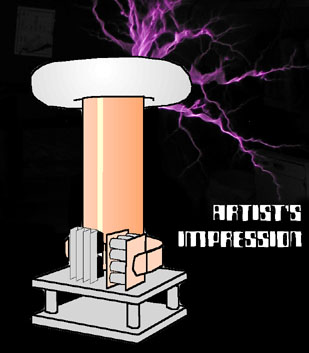


Each of these things is about 3" by 5" and weighs about a pound. They are rated to switch 600A continuous, 1200A pulsed, at 1200V. Now, it has already been proved that you can overload discrete IGBTs to twice or three times the manufacturer's pulse rating. But does it work with bricks too? We need to find out before wasting too much time, effort and money on building a huge coil around them.
In fact, there are some reasons to believe that it might not work. Basically, an IGBT brick is made from a lot of ordinary IGBTs in parallel. The manufacturer gets about a dozen of the little silicon dies and bonds them onto a massive plate, then hooks them all together with busbars and bond wires.
Current sharing normally isn't a problem. The tempco of IGBTs is negative, as you may have heard, but it's not that negative. If they are fitted to the same heatsink, then the temperatures normally track well enough for acceptable sharing. One other thing in our favour is that as we ramp the current up, the tempco becomes zero, and then positive! So they share high currents better than low ones.
Of course, this applies in the steady state. Dynamically, the main problem is the inductance of the busbars. We are using high frequency currents and so a large voltage will appear over even a small inductance. One inch of wire will have an induced voltage of about 10V. So if the wires to the dies are different lengths they won't share current equally. Worse still... If the emitter wires to some dies are different lengths, the differences in voltage will appear in series with the gate voltage at the dies. So the gate voltage could jump up and down by almost 10V compared to what you want.
But what the hell, let's do it anyway.

<<< Return to TC Page Next: Building a giant gate driver >>>